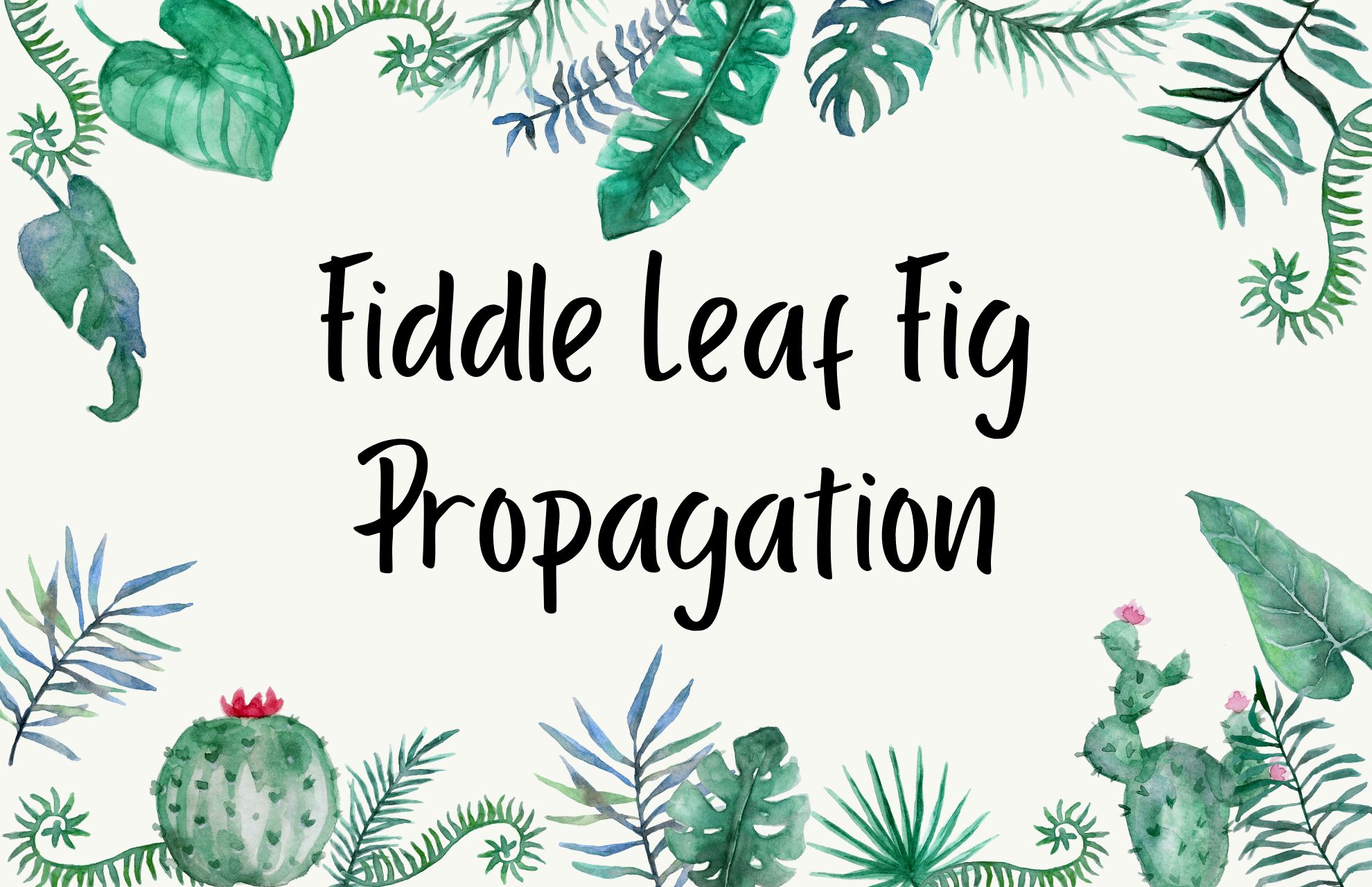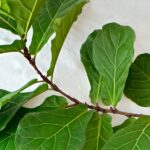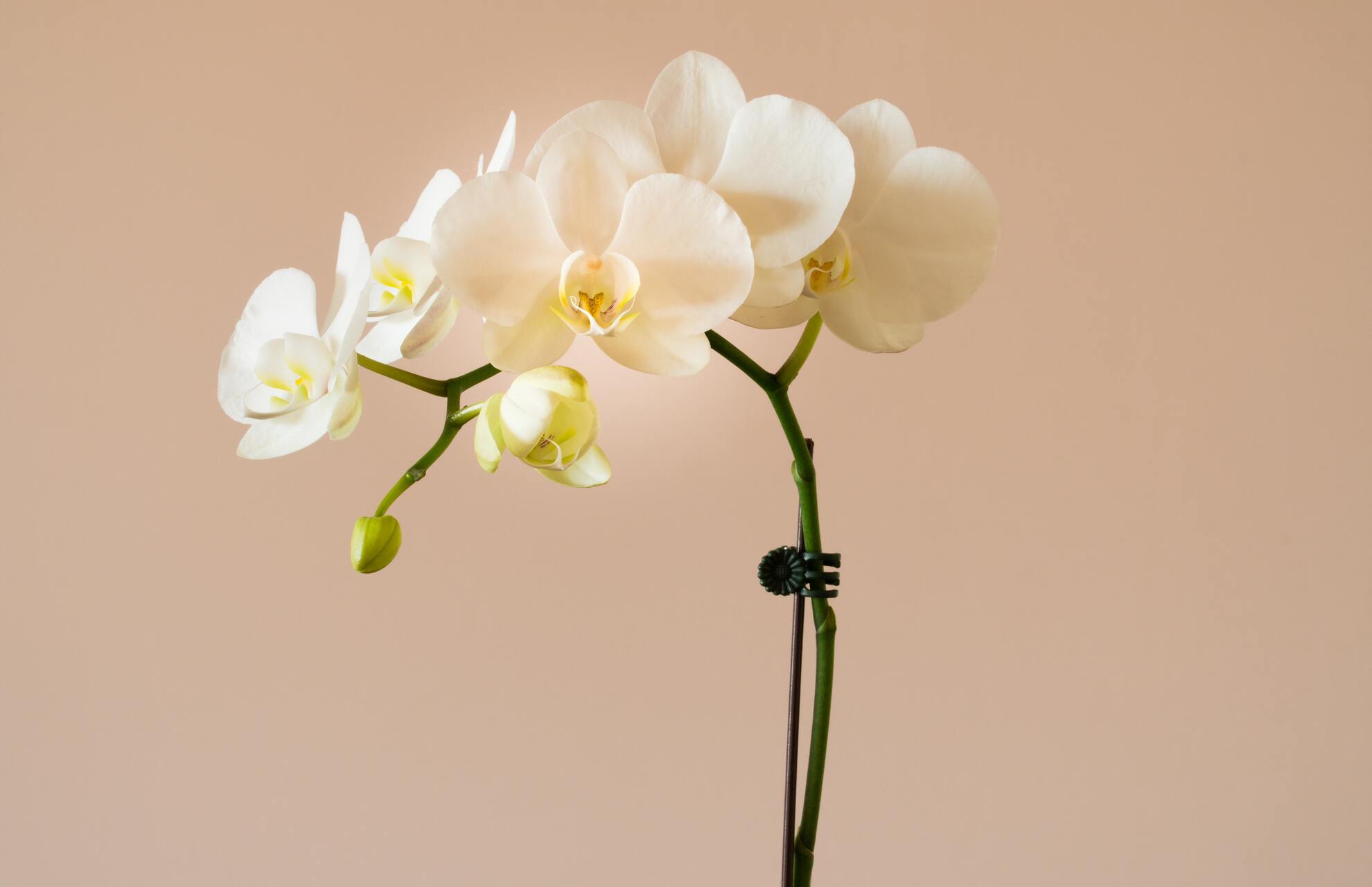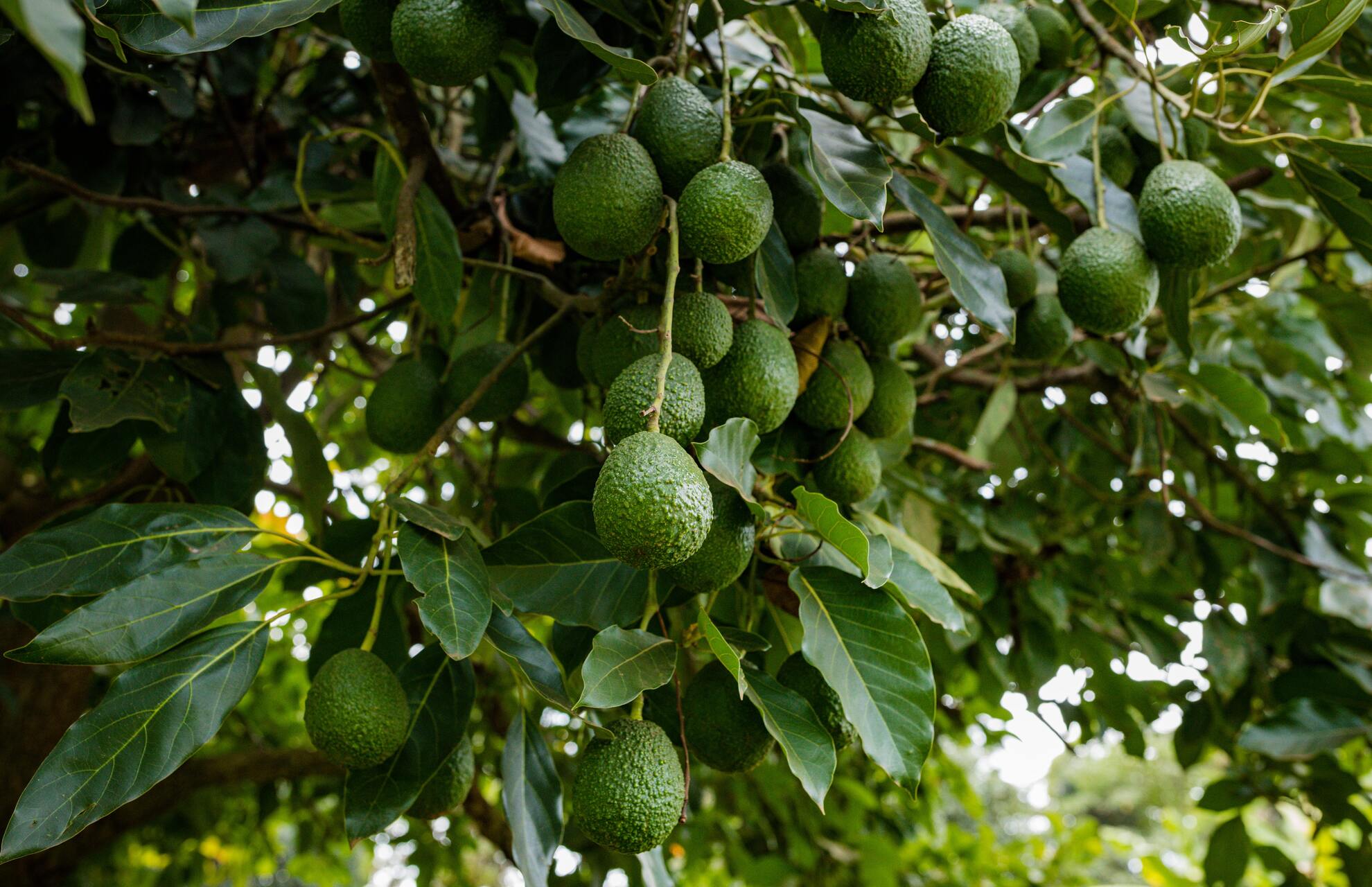You might start to think about fiddle leaf fig propagation if you’re a fiddle leaf fig fanatic trying to expand your herd. You can try these three techniques out after reading this post.
Have you wanted to try rooting your fiddle leaf fig, but were unsure of the best propagation methods and procedures?
Do not be alarmed; although rooting new fiddle leaf figs at home may seem intimidating at first, I’ll walk you through every step in this post. Let’s get started by learning how to divide and multiply those fiddle leaf figs!
You Might Also Like: Are Fiddle Leaf Figs Toxic to Pet Cats, Dogs or Other Animals?
How to Propagate a Fiddle Leaf Fig in Water?
The best way to grow a fiddle leaf fig, in my opinion, is in water. My preferred method is to propagate plants in water whenever possible! That’s because I enjoy being able to watch the root’s growth. When you directly plant a cutting in soil, you’re kind of in the dark as to how it will develop.
The procedures I advise using when growing a fiddle leaf fig cutting in water are listed below. For growing leaves and small stem cuttings, I advise using this technique!
- Make a small diagonal cut in the stem, leaving 1-2 inches of bare stem at the bottom. If necessary, take out any extra leaves from the bottom. Remove any extra sap by wiping the primary plant wound.
- If you want to encourage growth, you can dip the cutting’s tip in a rooting gel. Place the cutting in a jar with room-temperature water after that. The water from the faucet is excellent. No distillation or purification of the water is necessary.
- Make sure that none of the cutting leaves are submerged in water, as they will rot if they are. Only the stem should make contact with the water.
- Place the jar in a cozy, well-lit area. I set mine on a windowsill where it gets some early morning sunlight.
- To prevent the water from evaporating and exposing the stem, keep an eye on the jar. Although some people advise doing so every few days, I don’t, and they’ve still grown well.
- You ought to start noticing a few tiny white dots near the stem’s base after a couple of weeks. These will eventually develop into roots.
- For your cutting to have strong enough roots, it might take two to six weeks. For the best chance of success when planting in soil, aim for roots that are a couple of inches long, with some smaller roots growing out of larger ones.
- Put your cutting in a small pot when the roots are large enough. FLFs typically prefer to mostly dry out before being watered. However, because the roots are accustomed to being submerged in water constantly, you should keep the soil moister than usual for the first few weeks.
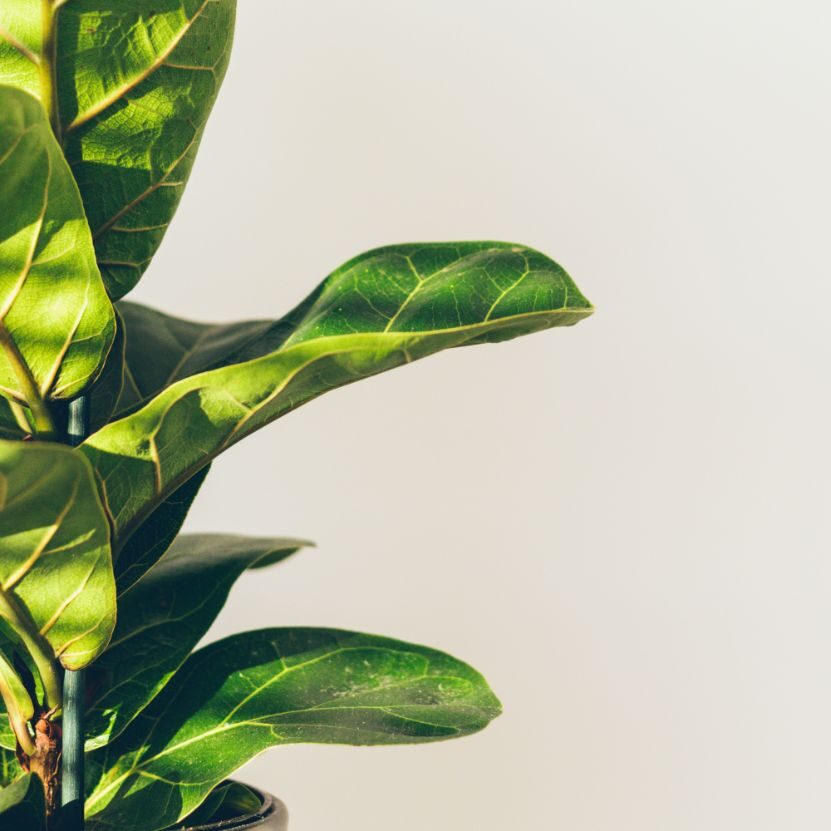
How to Propagate a Fiddle Leaf Fig in Soil?
Cuttings can also be grown directly in the ground. This process requires some time, so don’t be concerned if your plant doesn’t show any new growth right away. Under the surface, a lot is happening! All of the energy is being put into growing a new root system by your new plant.
To take a great cutting, simply repeat step one above. Next, plant directly in the ground. To hasten the root-development process, dab rooting hormone powder on the cutting’s soil end. Rooting hormone is reasonably priced and is available online or at any nearby nursery. Additionally, a bottle lasts indefinitely.
Following the planting of your cutting in soil, keep the soil moist and cover the area above the soil with something like a plastic bag. The cutting will take root and grow faster as a result of the greenhouse effect created by this.
The plant is rooted once you see fresh growth emerging from the top of the cutting. Congratulations, you can now begin to treat it like any other plant.
- Using a sharp pair of cutters, cut the stem of the diagonal branch similarly to how you did above.
- Add rooting hormone to the cutting. By doing so, the wound is kept healthy and growth is encouraged.
- Don’t disturb the rooting hormone on the cutting’s end by inserting it into a pot that already has a hole dug in it. Aim for a stem depth of 1-2 inches. Make sure that no part of the leaves touches the ground as this will cause them to rot.
- To make sure the soil is touching the cutting’s end, pat the soil down around the cutting. Until the plant is established, give it a little water and keep the soil damp. The cutting might need to be staked with a small stake to keep it upright.
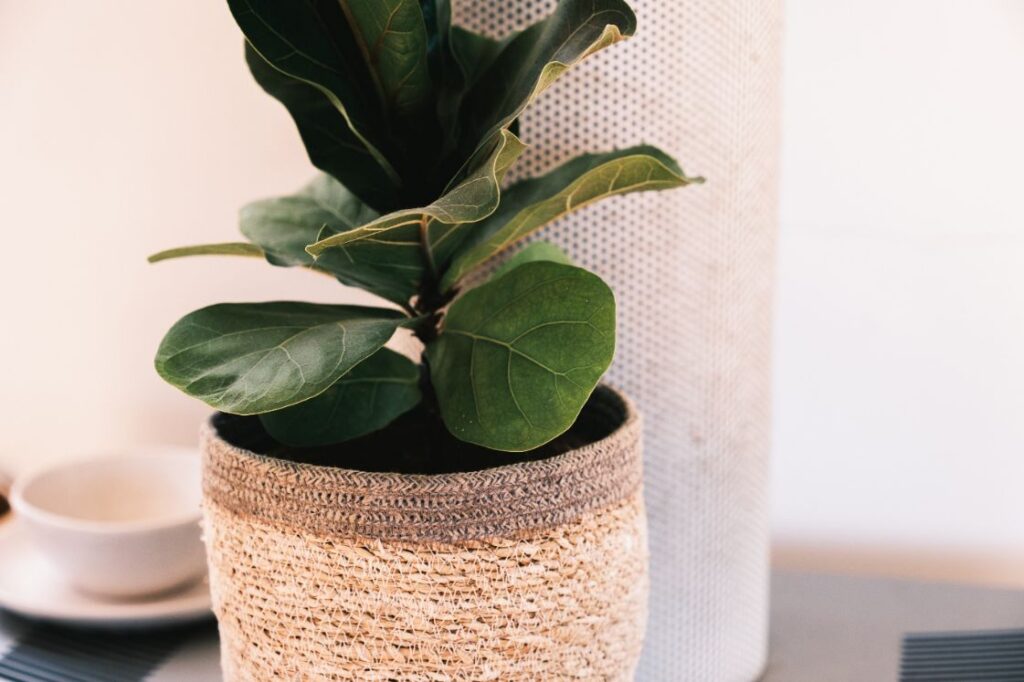
Try gently wiggling the cutting once a month or so later. If it remains in the pot, you’ll know roots are developing.
How to Propagate a Fiddle Leaf Fig from a Branch?
In this post, I also touched on the topic of how to transform a fiddle leaf fig bush into a tree. Both a bush and a tree can bear the fiddle leaf fig. A bush looks fuller because it has many branches. The tree shape has the waif-like appearance that everyone associates with fiddle leaf figs—a tall, single branch with what appears to be a bobblehead of leaves at the top.
- Choose which part of the plant you want to multiply. Make sure there is at least a four-inch section of bare stem available for air layering (or remove some leaves to make room). The diameter of a healthy stem should be slightly larger than your little finger.
- Create a “wound” on the stem with a sharp knife or cutters under a node (these resemble a raised ring on the stem). This will have the appearance of cutting a section of stem upward, like a tongue. Sphagnum moss should be applied damply to the wound and the stem.
- Put a clear plastic bag over the area or a bottle, and then use electrical tape to tape off the ends.
- Check the area every two weeks to see if roots are forming. Several months may pass before it is finished. The transparent cover will let you monitor development without interfering with the growth.
- When there are numerous roots, trim the stem below the air-layered portion, then take the plastic off. Sphagnum moss roots will be delicate, so take care to avoid disturbing them. Without removing the sphagnum moss, plant the cutting in a container.
How Do I Care for My New Fiddle Leaf Fig Plant?
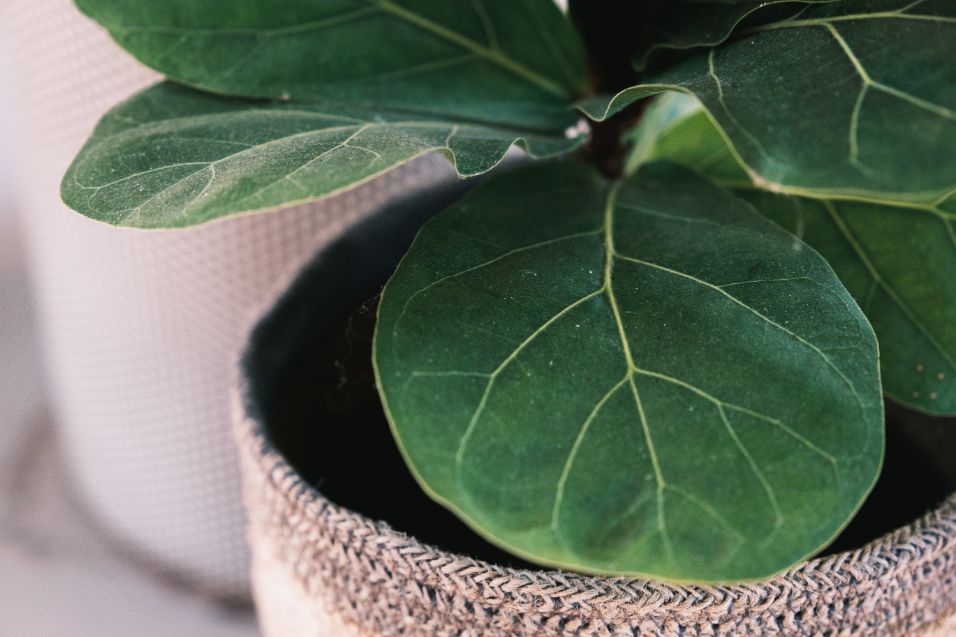
Your new plant can start receiving the same care as other fiddle leaf fig plants once you see new growth poking out from the buds on it. It’s a brand-new plant as of right now! This includes fertilizing it occasionally with a balanced houseplant fertilizer (avoid fertilizing while the plant is still rooted).
Well-draining soil and constant temperatures are favorable to fiddle-leaf fig plants. They prefer a lot of light and dislike being close to temperature changes like heat or AC vents or open doors or windows. You must alter your behavior if you see that they are dropping leaves. Your plant is not content. Finding a plant’s ideal location can occasionally just take a little while.
When you locate a location where your fiddle leaf fig is content, be sure to maintain a high humidity level. In the winter, when indoor air can be extremely dry, it is crucial to keep this in mind. To maintain a high level of humidity, I like to spritz my fiddle leaf fig leaves with water. See Brown Spots On Fiddle Leaf Fig: Reasons & Treatment.
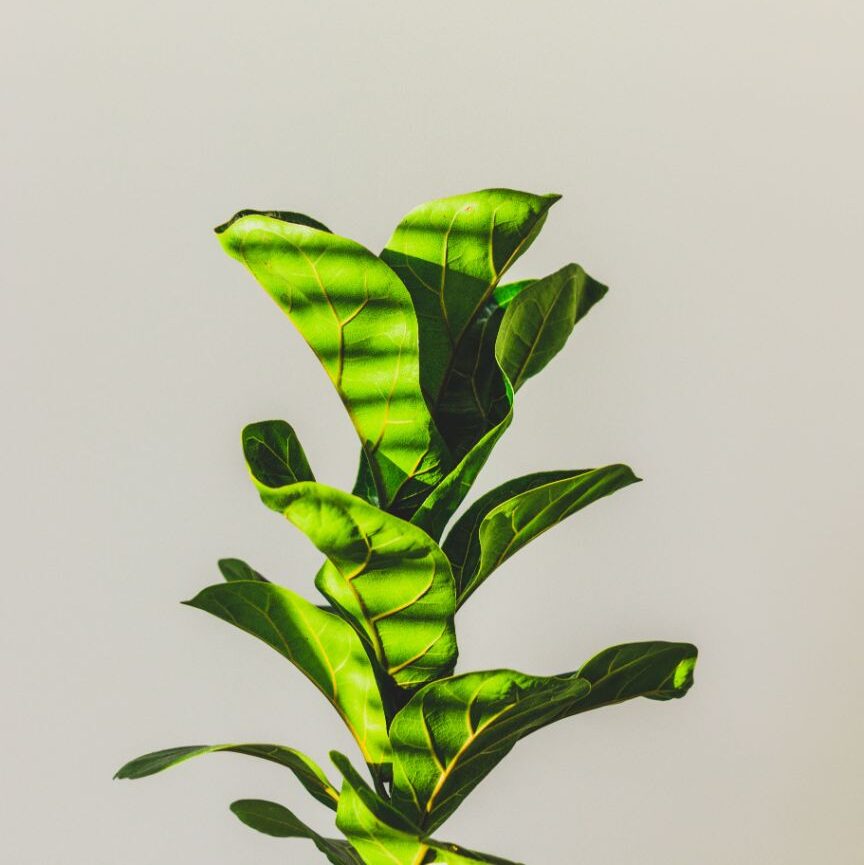
FAQs
Can I Propagate What I Have Pruned Off My Fiddle Leaf Fig?
Of course, pruning is a great chance to increase the number of plants. The cuttings can then be given as gifts to friends and family, ensuring that there is no waste from pruning your plant. Make sure to first reduce the size of the pruned sections if you intend to remove a significant portion of your plant.
As an illustration, divide a foot-long pruned section of the stem into two or three pieces. Make sure each section of the cutting has the right number of leaves and has enough bare stems at the bottom for it to root successfully by following the above instructions.
Why Isn’t My Propagated Cutting Growing?
After you have propagated your fiddle leaf fig, the majority of the plant’s energy will be spent establishing its root system. If it doesn’t show any new growth, try not to panic. When the time is right, the plant should begin growing again as long as it appears healthy.
When Should I Start Fertilizing My Propagated Plant?
It’s possible that fertilizer is too potent for newly formed root systems. The best time to fertilize a cutting is after it has been potted and new growth has appeared. This indicates that your cutting is ready for more nutrients. I advise using half-strength fertilizer when applying it for the first time.
How Long Does It Take for Fiddle Leaf Fig Cuttings to Root?
Your cutting’s roots typically take a month to develop. After about three weeks, you can see the roots forming at the base of the plant. Before you’re ready to replant, give them another week or so to grow.
What Happens If You Cut the Top Off a Fiddle Leaf Fig?
Cutting the fiddle leaf fig’s top will keep it short and encourage the growth of side branches, giving it a more compact appearance. If the fiddle leaf fig is lopsided, heavy pruning on one side can help create a balanced appearance.
Conclusion: Propagate Your Fiddle Leaf Figs Now
I advise beginning with water propagation if you are new to it and working your way up from there. Additionally, putting your cutting in water allows you to watch the new roots develop, which is a great way to monitor its progress.
Don’t forget to share this post if it helps you.

